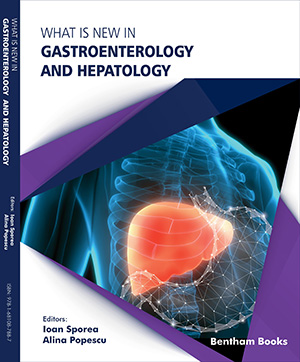Abstract
Colon cancer is a major global health concern characterized by complex interactions of genetic, environmental, and lifestyle factors. The "hallmarks of cancer" encompass various distinctions between cancerous and normal tissues, including vascular characteristics, making it a possible target for medication administration with specificity. The tumor microenviron-ment in colon cancer is a dynamic ecosystem comprising various cell types like cancer-asso-ciated fibroblasts, immune cells, and endothelial cells, influencing tumor progression and re-sponse to therapy. Various overexpressed receptors in colon cancer, like G-protein-coupled receptors (GPCRs), integrins, folate receptors, transferrin receptors, epidermal growth factor receptors (EGFRs), and CD-44 receptors, offer opportunities for targeted drug delivery. These receptors play vital roles in cancer cell growth, proliferation, and metastasis, making them important targets for therapeutic intervention.
[http://dx.doi.org/10.1038/s41392-020-0116-z] [PMID: 32296018]
[http://dx.doi.org/10.1021/bc100070g] [PMID: 20397686]
[http://dx.doi.org/10.1016/j.jconrel.2008.05.003] [PMID: 18571265]
[http://dx.doi.org/10.1038/nrc3180] [PMID: 22193407]
[http://dx.doi.org/10.3390/medicina56010015] [PMID: 31906017]
[http://dx.doi.org/10.7717/peerj.8017] [PMID: 31844563]
[http://dx.doi.org/10.1097/00002371-200109000-00002]
[http://dx.doi.org/10.3389/fmolb.2019.00160] [PMID: 32118030]
[http://dx.doi.org/10.1186/s13046-020-01709-5] [PMID: 32993787]
[http://dx.doi.org/10.3389/fimmu.2017.01887] [PMID: 29312351]
[http://dx.doi.org/10.1016/j.cca.2014.05.004] [PMID: 24836529]
[http://dx.doi.org/10.1038/s41392-020-00435-w] [PMID: 33414387]
[http://dx.doi.org/10.1038/s41392-022-01259-6] [PMID: 36588107]
[http://dx.doi.org/10.1371/journal.pbio.0000051] [PMID: 14691533]
[http://dx.doi.org/10.1096/fj.08-117002] [PMID: 19124558]
[http://dx.doi.org/10.1111/febs.16179] [PMID: 34478583]
[http://dx.doi.org/10.1152/physrev.00003.2005] [PMID: 16183910]
[http://dx.doi.org/10.2174/138161208785777397] [PMID: 18781989]
[http://dx.doi.org/10.1016/S0065-3233(07)74002-0] [PMID: 17854655]
[http://dx.doi.org/10.1124/pr.107.07108] [PMID: 18055507]
[http://dx.doi.org/10.1016/S0021-9258(18)53415-3] [PMID: 8383682]
[http://dx.doi.org/10.1097/MED.0b013e328340ff93] [PMID: 21042212]
[http://dx.doi.org/10.1021/bc050224c] [PMID: 16704191]
[http://dx.doi.org/10.3748/wjg.v5.i5.408] [PMID: 11819478]
[http://dx.doi.org/10.18632/oncotarget.18403] [PMID: 29262666]
[http://dx.doi.org/10.1507/endocrj.K06-177] [PMID: 17420609]
[http://dx.doi.org/10.2174/156720111793663633] [PMID: 21034425]
[http://dx.doi.org/10.1097/00005344-200000002-00002] [PMID: 10976772]
[http://dx.doi.org/10.1038/nrc990] [PMID: 12563310]
[http://dx.doi.org/10.1210/en.2009-0118] [PMID: 19628575]
[http://dx.doi.org/10.1158/1078-0432.CCR-10-2340] [PMID: 21245091]
[http://dx.doi.org/10.1021/jm049165z] [PMID: 15715477]
[http://dx.doi.org/10.2174/138161208786404308] [PMID: 18991712]
[http://dx.doi.org/10.1242/jcs.03098] [PMID: 16988024]
[http://dx.doi.org/10.1002/jcp.21237] [PMID: 17680633]
[http://dx.doi.org/10.1016/j.jconrel.2004.08.017] [PMID: 15544872]
[http://dx.doi.org/10.1016/j.humpath.2007.09.013] [PMID: 18342661]
[http://dx.doi.org/10.1002/ijc.21712] [PMID: 16453285]
[http://dx.doi.org/10.1021/jm8011323] [PMID: 19371039]
[http://dx.doi.org/10.1158/0008-5472.CAN-07-0033] [PMID: 17483358]
[http://dx.doi.org/10.2967/jnumed.110.076018] [PMID: 21149477]
[http://dx.doi.org/10.1021/ar7000815] [PMID: 17655275]
[http://dx.doi.org/10.1517/17425247.5.3.309] [PMID: 18318652]
[http://dx.doi.org/10.3390/cancers2041911] [PMID: 24281209]
[http://dx.doi.org/10.1038/sj.gt.3301748] [PMID: 12032698]
[http://dx.doi.org/10.1158/0008-5472.CAN-09-4311] [PMID: 20460527]
[http://dx.doi.org/10.1016/j.bbagen.2011.07.016] [PMID: 21851850]
[PMID: 11299801]
[http://dx.doi.org/10.4155/tde.13.21] [PMID: 23647279]
[http://dx.doi.org/10.1016/j.ejpb.2008.08.021] [PMID: 18805484]
[http://dx.doi.org/10.1016/1040-8428(94)00144-I] [PMID: 7612182]
[http://dx.doi.org/10.1021/bc0001488] [PMID: 11459457]
[http://dx.doi.org/10.1016/j.tcb.2006.10.008] [PMID: 17085050]
[http://dx.doi.org/10.1158/1078-0432.CCR-05-1554] [PMID: 17000658]
[http://dx.doi.org/10.1016/B978-012160281-9/50005-0]
[http://dx.doi.org/10.1016/j.cell.2006.09.013] [PMID: 17018275]
[http://dx.doi.org/10.2217/nnm.12.160] [PMID: 23249333]
[http://dx.doi.org/10.3109/1061186X.2012.702767] [PMID: 22758394]
[http://dx.doi.org/10.1016/j.ijbiomac.2014.09.005] [PMID: 25220787]
[http://dx.doi.org/10.1074/jbc.M110.213108] [PMID: 21592963]
[http://dx.doi.org/10.1111/cas.13894] [PMID: 30485589]
[http://dx.doi.org/10.1016/j.biocel.2016.09.009] [PMID: 27640754]
[http://dx.doi.org/10.1039/C5NR01084E] [PMID: 25898852]
[http://dx.doi.org/10.1002/pros.22775] [PMID: 24615685]
[http://dx.doi.org/10.1016/j.envres.2023.116506] [PMID: 37369307]
[http://dx.doi.org/10.1016/j.ijbiomac.2023.127142] [PMID: 37797853]
[http://dx.doi.org/10.1039/D0BM00556H] [PMID: 32500879]
[http://dx.doi.org/10.1038/s41598-020-61605-y] [PMID: 32170176]









